Tango Alla Romanesque
Tango Alla Romanesque
Tracks
01 Carlo Buti*******Passione Argentina
02 G. Cestari*******Chitarra Romana
03 Fernando Orlandis*******Violino Tzigano
04 Rico Bardi*******Scrivimi
05 E. Fusco*******Tango Della Banana
06 Oscar Carboni*******Tango Del Mare
07 Tino Rossi*******Tango De Marilou
08 Tino Rossi***** *C' Etait Un Musicien
09 Tino Rossi*******Ecris-moi
10 Maria Tanase*******Daca Nu Te Cunosteam
11 Maria Tanase*******Juanita
12 Gion*******Adio, Doamna
13 Gion*******Da-mi Iarasi Gura Ta
14 Titi Botez*******Crizanteme
15 Titi Botez*******Marcitta
16 Cristian Vasile Jyra Jyra
17 Jean Moscopol*******Ai Sa Iubesti Odata Si Tu
18 D. Evstratiou y Dimitris Philippopoulos*******Mesanichta
19 D. Evstratiou y Dimitris Philippopoulos*******Klapse
--------------------------------------------
Tango Alla Romanesque - Old World Tangos Vol. 2 / Oriente Musik Audio CD 2002 / RIEN CD 40
UPC 4025781104026
Label: Oriente Musik – RIEN CD 40
Series: Old World Tangos – Vol. 2
Format: CD, Compilation
Country: Germany
Released: Oct 16, 2002
Genre: Latin, Pop
Style: Tango, Chanson
========================
Old World Tangos Vol. 2: Tango alla Romanesque "
RIENCD40
The second CD in our Old World Tangos series focuses on the "Romanic" countries of Italy, France, and Romania - with a Greek encore.
Research of the individual titles was often difficult - we do not even know the first names of some of the singers. Tango is light music and evidently it was assumed that interest in serious information on the life and artistic career of tango singers did not exist.
This is particularly true in the case of ITALY. The sole source of information on popular music is often the annual reviews of the San Remo Song Festival - an event beneath the dignity of such a leading music nation as Italy. CARLO BUTI (1900-1963) is the only well-known name not entirely associated with tango, but the same also applies to the magnificent OSCAR CARBONI - just a tiny reference to his performance at the 1951 San Remo Festival - everything else is lost in the realms of the history of popular music.
The great Corsican singer TINO ROSSI (1907-1983) is, in contrast, still immensely popular - his own website is just one expression of the continued adoration of his fans.
Once again, ROMANIA has a special place on this CD; discovery of this country's historical musical heritage was presented in the OLD WORLD TANGO series vol.1 (Echoes from afar, RIENCD20). We are particularly proud of the recordings of the legendary "magic bird" MARIA TANASE (1913-1963). These are the only two tangos that she sang; the recordings are not in any archives but only contained on the few remaining original shellacs; a musical treasure even if the sound quality is poor and Juanita is not a genuine tango. Pride in this discovery outweighs - may tango and HiFi purists forgive us. Anyway, Juanita is worth releasing just on account of its incredible pianist.
JEAN MOSCOPOL (1903-1983) and TITI BOTEZ (1901-1957) are familiar names from the Echoes CD and are joined here by the "last troubadour" CRISTIAN VASILE (1908-1985) and the enigmatic GION (1910-?) - all we were able to find out about him was that he was a widely acclaimed coffee house singer in the Romanian spa town of Sinaia in the early thirties.
And finally, two Greek tangos, sung by DIMITRIS PHILIPPOPOULOS, and somehow also romanesque - there was never a truly "Greek" tango scene, rather it was an offshoot of the Italian and French tangos. Not that this in any way detracts from the quality of the two Phillipopoulos tangos. (cf. the notes on RIENCD20)
And there is something more to celebrate - a kind of "monument to the unknown tango guitarist". The first time we heard it was in the tangos that Pjotr Leschenko (cf. RIENCD06 and 12) recorded in the thirties: An unmistakable, delightfully schmaltzy Hawaiian guitar sound that at once made us sit up and take notice and which we encountered again in numerous tango recordings from England, Romania, and Italy. What all these recordings have in common is that they were made for the Columbia label that was very active in the thirties. The unknown "maestro" can also be heard in this collection - on the Greek tango entitled Mesanichta, also a Columbia recording. Is it a question of a coincidence, an entire school of guitarists, or the eternally wandering Hawaiian guitarist who always turned up in that part of Europe where tangos were recorded for Columbia? We do not know, but would welcome any relevant information on the subject.
Till Schumann
The tango in the Europe of the 20s and 30s - a ballroom dance, a music style, an attitude to life?
The first Argentine tango musicians arrived in Paris before World War I to make recordings of their new music. Art circles, intellectuals, and members of the aristocracy developed an interest in this flamboyant form of dance and music. The Argentinian tango was the dance and musical expression of the rootlessness, poverty and despair of immigrants, and also compensation in the form of an eroticism displayed with a directness previously unknown. The elements of the "disrespectable", the gutter, the "forbidden" were adopted as an artistic style in the salons of many European cities. However, at the time most Europeans were unable to understand the true nature of the Argentinian tango. In Europe the tango developed into a form of ballroom dance; it was deprived of its creative force and given fixed, easy-to-follow rules for the ballrooms of the pleasure-seeking "Jeunesse Dorée" of the 20s and 30s. Orchestras playing the tango were light orchestras in the truest sense of the word.
The bandoneon (incidentally an instrument invented in Germany) was frequently replaced by the accordion - an instrument easier to play. The texts of the tangos were romantic, wistful, rarely provocative - at the very most melancholy. The yearning for all-liberating, romantic love was reflected in most of the songs - in contrast to the unvarnished, true-to-life poetry of the Argentinian texts.
The European tango is a cliché. It staged a feeling for life that people in Europe readily adopted in their search for identity in a changing world which was characterised by increasing industrialisation after World War I. The tango was essentially a phenomenon of the cities in Europe, too. It was not confined to any one region and developed its appeal beyond national and cultural borders. This meant that many successful tangos were translated into a variety of different languages. In the Europe of seventy years ago the tango had already become a synonym for globalisation - long before this became a term in common use. European tango was light music, popular music, a ballroom dance that crossed national boundaries and traditions. It was no more, but no less than the pop music of the Golden Twenties and of the thirties, a musical link in the urban society of the twentieth century.
Gigi Backes
автоматический перевод
Танго Старого Света, том. 2: Танго в романском стиле
Второй компакт-диск из нашей серии «Танго Старого Света» посвящен «романским» странам Италии, Франции и Румынии – с выходом на бис в Греции.
Исследование отдельных названий часто было затруднено - мы даже не знаем имен некоторых певцов. Танго — легкая музыка, и, видимо, предполагалось, что интереса к серьезной информации о жизни и творческой карьере исполнителей танго не было.
Особенно это касается ИТАЛИИ. Единственным источником информации о популярной музыке зачастую являются ежегодные обзоры Фестиваля песни в Сан-Ремо – события, недостойного такой ведущей музыкальной нации, как Италия. КАРЛО БУТИ (1900-1963) – единственное широко известное имя, не совсем связанное с танго, но то же самое относится и к великолепному ОСКАРУ КАРБОНИ – всего лишь крохотная отсылка к его выступлению на фестивале в Сан-Ремо 1951 года – все остальное теряется в области истории популярной музыки.
Великий корсиканский певец ТИНО РОССИ (1907-1983), напротив, по-прежнему пользуется огромной популярностью: его собственный веб-сайт является лишь одним из проявлений постоянного обожания его поклонников.
Еще раз, РУМЫНИЯ занимает особое место на этом компакт-диске; Открытие исторического музыкального наследия этой страны было представлено в серии OLD WORLD TANGO vol.1 (Echoes from afar, RIENCD20). Особой гордостью являются записи легендарной «волшебной птицы» МАРИИ ТАНАСЕ (1913-1963). Это единственные два танго, которые она спела; записи не находятся ни в каких архивах, а содержатся только на немногих сохранившихся оригинальных шеллаках; музыкальное сокровище, даже если качество звука плохое, а Хуанита - не настоящее танго. Гордость за это открытие перевешивает – да простят нас пуристы танго и HiFi. В любом случае, «Хуаниту» стоит выпустить хотя бы из-за ее невероятного пианиста.
ЖАН МОСКОПОЛЬ (1903-1983) и ТИТИ БОТЕС (1901-1957) - знакомые имена по компакт-диску Echoes, к ним присоединяются здесь "последний трубадур" КРИСТИАН ВАЗИЛЬ (1908-1985) и загадочный Гион (1910-?) - все нам удалось узнать о нем то, что в начале тридцатых годов он был широко известным певцом в кофейне румынского курортного города Синая.
И, наконец, два греческих танго в исполнении ДИМИТРИСА ФИЛИППОПУЛОСА, и почему-то еще и романского – по-настоящему «греческой» танго-сцены никогда не было, скорее это было ответвление итальянского и французского танго. Не то чтобы это каким-либо образом умаляло качество двух танго Филлипопулоса. (см. примечания к RIENCD20)
И есть что отпраздновать – своего рода «памятник неизвестному танго-гитаристу». Впервые мы услышали это в танго, записанном Петром Лещенко (ср. RIENCD06 и 12) в тридцатые годы: безошибочно узнаваемый, восхитительно сентиментальный звук гавайской гитары, который сразу же заставил нас встать и обратить на себя внимание и с которым мы снова столкнулись во многих записи танго из Англии, Румынии и Италии. Все эти записи объединяет то, что они были сделаны для лейбла Columbia, который был очень активен в тридцатые годы. Неизвестного "маэстро" можно услышать и в этом сборнике - в греческом танго Mesanichta, тоже записи Columbia. Случайность ли это, целая школа гитаристов или вечно странствующий гавайский гитарист, который всегда оказывался в той части Европы, где записывались танго для Колумбии? Мы не знаем, но будем рады любой соответствующей информации по этому вопросу.
Тилль Шуман
Танго в Европе 20-30-х годов – бальный танец, музыкальный стиль, отношение к жизни?
Первые аргентинские музыканты, танго, прибыли в Париж перед Первой мировой войной, чтобы записать свою новую музыку. Художественные круги, интеллектуалы и представители аристократии проявили интерес к этой яркой форме танца и музыки. Аргентинское танго было танцем и музыкальным выражением безродности, бедности и отчаяния иммигрантов, а также компенсацией в форме эротики, проявленной с ранее неизвестной прямотой. Элементы «непочтительного», беспощадного, «запретного» были приняты как художественный стиль в салонах многих европейских городов. Однако в то время большинство европейцев не могли понять истинную природу аргентинского танго. В Европе танго превратилось в форму бального танца; его лишили творческой силы и установили четкие и простые правила для бальных залов ищущей удовольствий «Женесс Доре» 20-х и 30-х годов. Оркестры, играющие танго, были легкими оркестрами в прямом смысле этого слова.
Бандонеон (кстати, инструмент, изобретенный в Германии) часто заменялся аккордеоном – инструментом, на котором легче играть. Тексты танго были романтичными, задумчивыми, редко провокационными – в лучшем случае меланхоличными. Тоска по всеосвободительной, романтической любви нашла отражение в большинстве песен – в отличие от неприукрашенной, правдивой поэзии аргентинских текстов.
Европейское танго – это клише. Это поставило чувство на всю жизнь.
--------------------------------------------
--------------------------------------------
Пожалуйста.
--------------------------------------------
Чарующие звуки танго!!
Весь вечер слушаю твой концерт ТАНГО ...
ГРЕКИ!!!
Ну это прелесть что за греки!
ДИМИТРИС ФИЛИППОПУЛОС И Д ЭФСТРАТИУ - Полночь.....
Да все,все замечательное!
Умничка ты-спасибо тебе за твой ТРУД!
Найти,выбрать,подарить сайту...душу греют такие танго-любимейшая музыка...
Валерию 123-спасибо,конечно,за такую обширнейшую информацию,все это хорошо, интересно,но и автору этого поста даже малюсенькое ваше-спасибо!-уж никак не помешало бы,а вдохновило на грядущие поиски чудесного муз.ретро))))
Это так,к слову![]()
Спасибо,Валентина, за альбом с уникальной музыкой в стиле танго!



Удивительные тенденции происходят в последнее время. Даже тексты,которые совсем недавно в Сети приветствовались, теперь сокращают (YandexGPT).
То же самое и с изображениями. В модном Тик-Токе отменили горизонтали, всё подаётся только в узком вертикальном стиле...
Но музыка пока ещё держится в классическом формате.

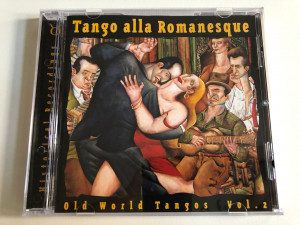
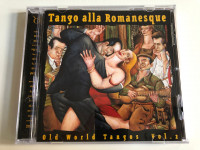
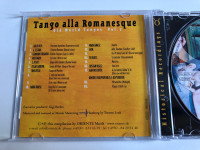
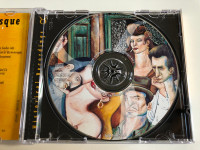
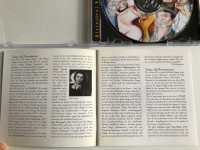
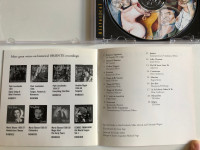
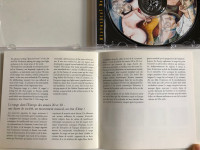
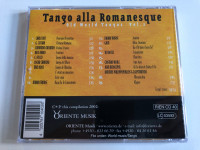



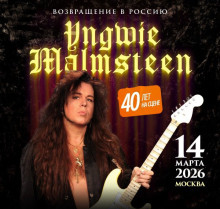


___keepration_220x220.jpg)
___keepration_220x220.jpg)
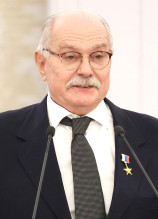
.